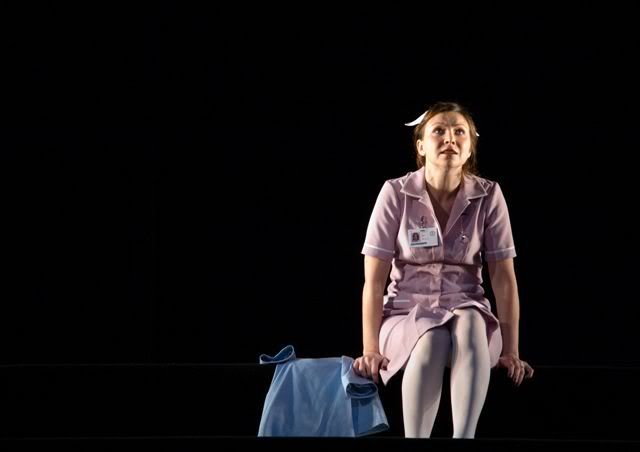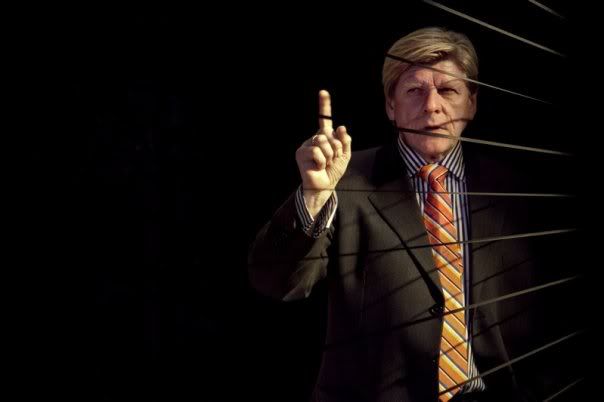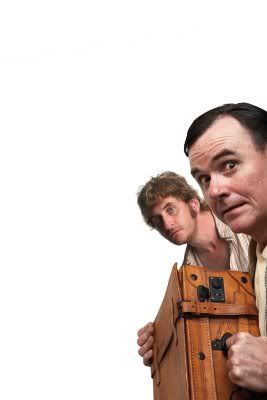Wharf 2 has been completely transformed for this performance. The audience surround the space on two levels, ground floor and upstairs, in the centre we look onto the playing space. The blurb states designer Alice Babidge took inspiration from “old courtyards, bear-baiting pits, cloisters and coaching inns of the medieval world.” and this rings true, although I was also reminded of an underground parking lot or food court at any multi level mall. While I had thought that sightlines would be a nightmare in this space, such was the confidence in design that I never felt I was missing anything, despite staying on the ground floor and hugging the walls most of the night. It is a credit to Babidge and each director that the space was used in vastly different and developing ways across the three sections of the piece, I felt only at the very end had I seen a trick before.
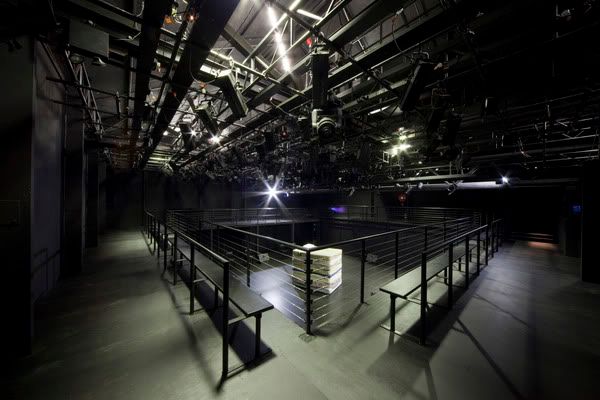
Matthew Lutton’s Eden is a square of white confetti, populated by the naked Adam and Eve (Cameron Goodall and Sophie Ross) in glorious white wigs, a fluffy suited penguin and hanging from a rope in the corner of the square, is a plastic apple filled with milk, the fruit of the tree of knowledge of good and evil. Lutton’s piece is the most aesthetically assured of the three, establishing a theatrical language almost immediately as the lights slowly rise on God, slumped naked in a chair. The performances are heightened, as is demanded by Hilary Bell and Lally Katz’s highly poetic text, Lutton matches the poeticism of the text with a formalism of gesture, repeating certain actions that we become familiar with the meaning of. Because of this the piece takes on a sort of distance, and we become sucked into the theatrical world of Eden, the text and movement of the naked bodies lulls us into an almost meditative (perhaps religious) state. This serves Lutton brilliantly as paradise is stripped from it’s inhabitants after Eve succumbs to Lucifer and the serpent, rendered here as a lock of black hair. The text shifts into purer action and so does the performances, we see Adam and Eve shiver from cold and beg God for one last hug before they are cast out. In this first section of the Mysteries, Lutton has created a stunningly confident and rather unsettling opening. And while the piece is occasionally marred by weaker passages of language and some fairly indulgent acting to match it, I think I may be starting to “get” this Lutton thing.
After a fifteen minute break head back in for Upton’s After the Fall, which is, I have to say, pretty rock and roll. There are a few balloons strewn around the place and the cast (STC’s residents) are belting out a version of Velvet Underground’s Run Run Run from the upper and lower levels of the space. Upton’s piece is performed in promenade and the performers move and appear amongst the audience as Adam and Eve (now a dysfunctional Australian family swearing at each other) lament their great loss while their son’s Cain and Abel feud over their respective harvests. Through this landscape stalks death, a girl with her pony tail hanging over her face, claiming everyone as the end comes to them as murder, suicide or old age. The actors are here given license to play clear, somewhat realistic actions, Adam bitches about Eve, Abel teases Cain and Seth wanders around trying to calm everyone down. This is a massive relief after Lutton’s formalism, and while Upton lacked Luttton’s aesthetic confidence, it certainly gained something from this shift. The space is used well and the performers seem to relish the opportunity to be so close to the audience, allowing a different sort of communication, I always get a kick out of laughing and having the actor look straight at you to share the moment. It’s magic: television can’t do that. The audience seemed fairly bemused by the staging, and for the most part they steered clear of wandering around to get a better look at the action. This is so far removed from the world of promenade performances at PACT or Performance Space, where the audience is more literate in this style and will move freely to view more or even to test the limits of the performers. The strange mix of radicalism and conservatism was no where more prevalent than in Upton’s section, made more obvious by some clunky sections of text intoned once again to great virtuosity but little effect, set against really powerful images and kick arse music. Stranger and strangerer.
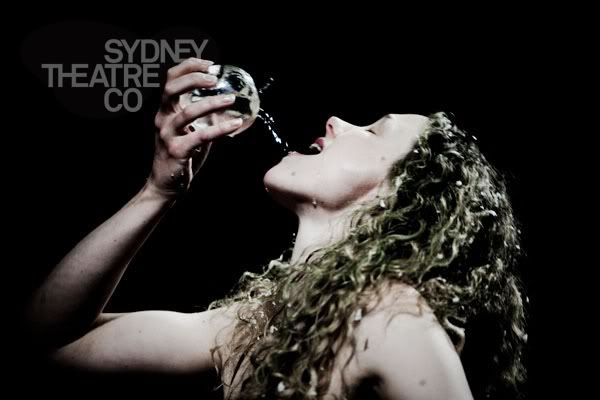
The final section dealt with Noah and his ark. Here Noah is a bedridden obsessive compulsive listening intently to the radio as his wife pleads with him to come down and back out into the town. Tom Wright’s set is a pile of mattresses in the centre of the stage on which Noah remains for the entire piece. His daughters coming to him from the depths of the sheets and God appearing to him through the radio or from the foot of his bed. Wright’s piece is the weakest of the three, suffering from further ponderous sections of text and some fairly unsubtle choreography. I am also totally sick of revolves and as soon as the mattresses did so I switched off, content to watch the lights in the ceiling and listen to the loud amplified rain instead of what was happening onstage. The strength of Wright’s section was in how he combined formal elements from the other sections and reused them so as to illuminate the story of Noah, it was a fitting end to the whole performance as it reminded us of what had gone before and suggested beginning anew after the flood.
The Mysteries: Genesis is an amazing thing to be occurring as a part of a main stage season at STC, The Residents (STC’s new crack team of young theatre makers) are committed and sometimes thrilling performers, the direction is playful, assured and considered and the language, while sometimes ill formed, invokes a certain tone of spirituality that is invaluable to the work. It is flawed, in some places quite deeply, but nevertheless it is a landmark thing to be occurring at a flagship company and deserves support for this kind of programming. It is the most interesting thing I have seen at STC all year, and I hope that their 2010 season can come up with something just as interesting, by the looks of it… maybe not, but fingers crossed anyway.
Also sorry for being out of the loop for ages, I had shows and assignments. Here is a picture from Elephant People by Daniel Keene, which I directed with 2nd students at UOW.
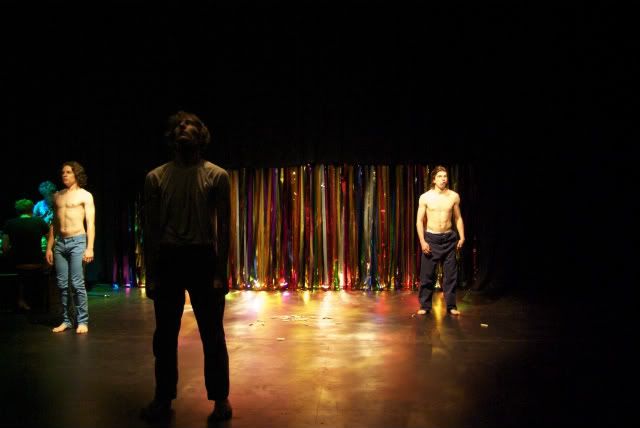
Mark
